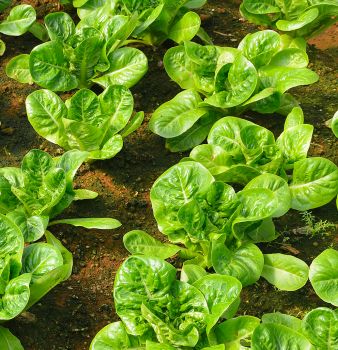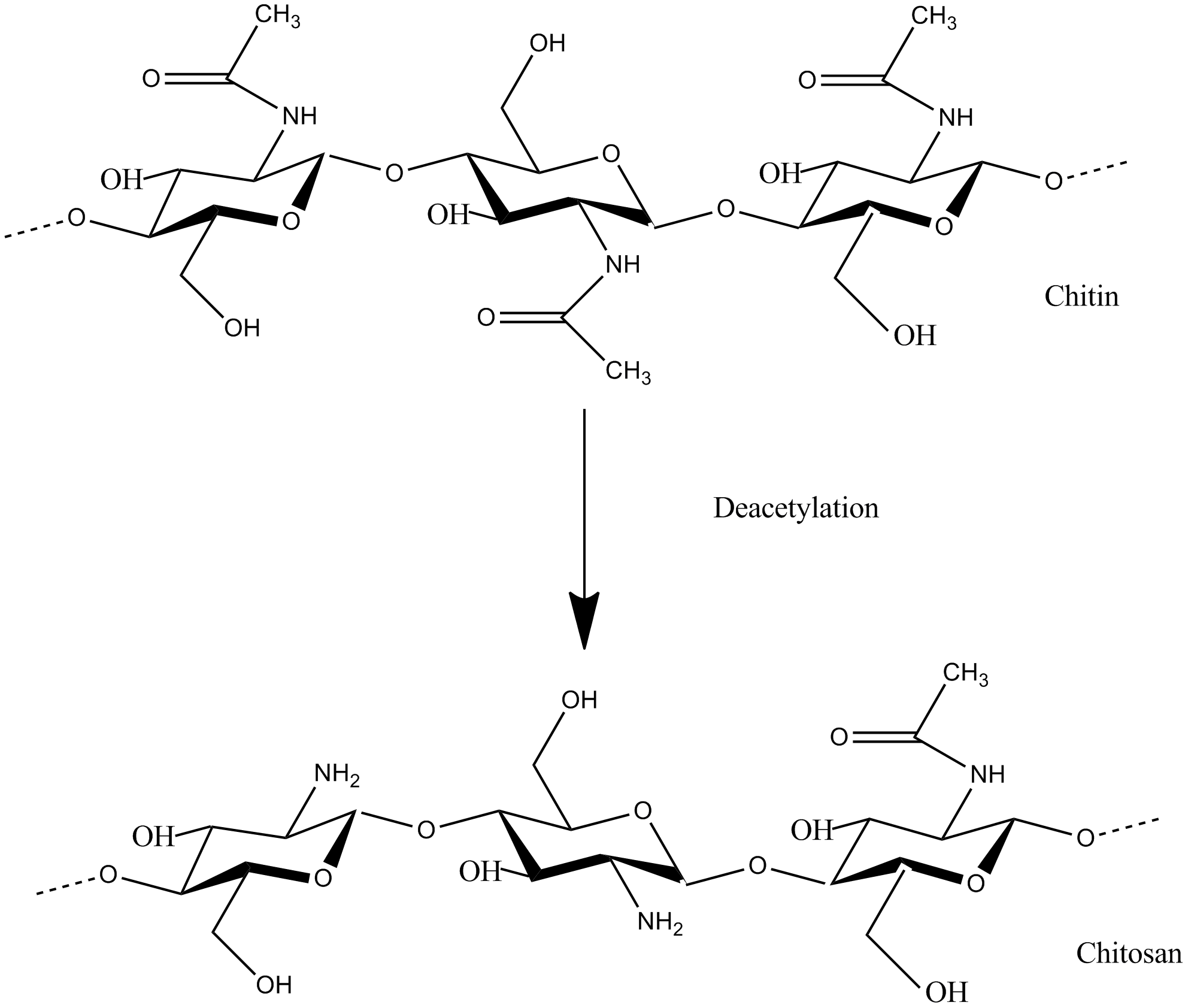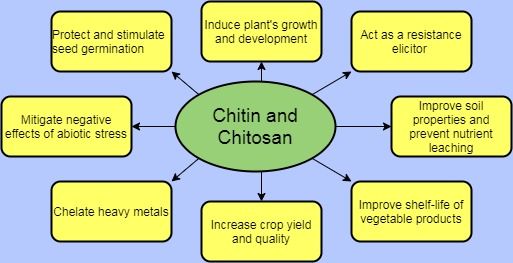Chitosan as plant biostimulant in modern horticulture
By: Mohamad Hesam Shahrajabian, Spyridon A. Petropoulos
Department of Agriculture, Crop Production and Rural Environment, University of Thessaly, Fytokou Street, 38446, Volos, Greece.
*Correspondence: spetropoulos@uth.gr, hesamshahrajabian@gmail.com

Biopolymers such as chitosan are a group of biostimulants which are reported to possess beneficial properties with several applications on horticultural crops.
Chitosan in particular is produced after the deacetylation of chitin and is in the research focus during the last decades due to the interesting effects on crops. It is commercially produced from seafood shells and its main application is related to plant defense against pathogens, since it may induce the production of protective molecules against pathogens. It is considered a promising material for pollutants removal, an environmentally, eco-friendly and multipurpose polymer with extensive application in various field like agriculture, cosmetology, food, paper, pharmacy and textile industries, and can be combined with many other polymers and elements and utilized in plant production systems. Biostimulant activities have also been reported being mainly associated with increased photosynthetic activity, tolerance to drought, salinity and extreme temperatures stress and increased activity of antioxidant enzymes. On the other hand, oligochitosan, which has greater than 3 but less than 10 saccharide (N-acetylglucosamine or glucosamine) residues, is obtained by either chemical or enzymatic hydrolysis of chitosan.
Chitosan may have several applications which could be summarized as follows:
- protect and stimulate seed germination through seed coating;
- induce plant’s growth and development;
- act as a resistance elicitor through the induction of plant defense mechanisms;
- mitigate negative effects of abiotic stress;
- improve soil properties and prevent nutrients leaching;
- chelate heavy metals;
- increase crop yield and quality;
- improve shelf-life of food products through post-harvest treatments.
Modes of application:
- foliar spraying,
- direct incorporation in soil or
- coating of seeds and vegetable products.

Fig. 1. Chitin and Chitosan
However, considering that chitosan is a biopolymer that comprises compounds of different deacetylation and polymerization degree there is a great variability in the composition of the commercially available products which may also result in variable effects on crops.
Below are reported some examples of chitosan application in vegetable crops.
Literature reports suggest inconsistent results for the foliar application of zinc combined with humic acid and chitosan on common bean plants. Additionally, chitosan application was found beneficial for lettuce and tomato plants growth and increased phytochemicals defensive metabolites content in spinach leaves. However, there is evidence that bulk chitosan is associated with root growth inhibition when applied in non-optimal concentrations, therefore alternative forms have been suggested including chitosan micro- and nanoparticles which are safer for agricultural use.
Moreover, chitosan has been used to alleviate water stress negative effects and increase shelf life on horticultural crops such as basil, lettuce, spinach, tomato and pepper among others. In the case of basil, it can also improve total phenol and antioxidant activity in plants subjected to drought stress, while foliar application of chitosan lactate can promote the accumulation of bioactive substances or increase the activity of antioxidant enzymes and augment photosynthesis and plant growth. In another study it was reported that chitosan application can promote plant growth of artichoke seeds and induce a significant decrease in fungi contamination. Chitosan maybe involved in the synthesis of defense-responsive enzymes or stimulate phytohormones in cucumber plants. In common bean, it increased the yield on normal or delayed sowing, while the use of nanocarriers composed by alginate/chitosan was effective in promoting leaf area and the levels of chlorophylls and carotenoids. Chitosan nanoparticles were also effective against foodborne pathogens and they improved shelf-life of fresh cut bell pepper. Nanocomposites can improve both the nematocidal activity and the plant systematic immune response in the case of eggplant, while loading of nanoparticles with indole-3-acetic acid increase growth of hydroponically grown lettuce plants. Nano-chitosan can improve the efficiency of traditional fertilizers and promote the net return per fed in onion, while chitosan/polyacrylic acid hydrogel nanoparticles stimulated the yield, plant growth and nutrient content of onion bulbs. Chitosan foliar application at 100 or 125 mg/L can be applied at early growth stage to achieve higher yield in okra, while the combination of Ascophyllum nodosum extracts and chitosan suppressed pea powdery mildew largely by modulating jasmonic acid and salicylic acid through the up-regulation of signaling pathways. Chitosan application can significantly increase root fresh and dry weight in potato plants, while foliar spraying of chitosan with humic acid can lead to the highest values of tubers yield and yield components. Chitosan (75 mg/L), and oligo-chitosan (50 mg/L) can increase plant growth and induce defense mechanisms for drought stress tolerance in potato, as well as stimulate resistance against pathogens. Similarly, chitosan treatment on tomato plants had positive effects in pathogens control, while combined application with salicylic acid increased fruit yield. Chitosan combined with chelated-copper had a higher efficiency in the enzymes activation associated with pathogenicity than chitosan or copper acting alone in the tomato crop, while chitosan + compost + arbuscular mycorrhizal fungi application improved tomato growth.

In conclusion, research findings demonstrated that chitosan acts as plant biostimulant in horticultural crops. However, considering the great variation in composition of the commercial products contrasting results regarding its effects on horticultural crops were observed. Therefore, more efforts are needed to standardize the industrial production process and provide detailed information on composition of chitosan-based products. This will create a common base for the evaluation of the effects of chitosan in the farming sector, while it will help in revealing the mechanisms of action and the physiological processes involved. Moreover, significant efforts are made to obtain chitosan from other sources, such fungal derived chitosan providing alternative and eco-friendly tools to improve vegetable crop yield and quality under stress conditions.
Acknowledgements: This article has been cofinanced by the European Regional Development Fund of the European Union and Greek national funds through the Operational Program Competitiveness, Entrepreneurship and Innovation, under the call RESEARCH – CREATE – INNOVATE (project code:T2EDK-05281).

(1) Petropoulos, S.A. 2020. Practical applications of plant biostimulants in greenhouse vegetable crop production. Agronomy 10(10): 1569. https://doi.org/10.3390/agronomy10101569
(2)Pichyangkuraa R., Chadchawan S. 2015. Biostimulant activity of chitosan in horticulture. Scientia Horticulturae 196: 49-65. http://dx.doi.org/10.1016/j.scienta.2015.09.031



